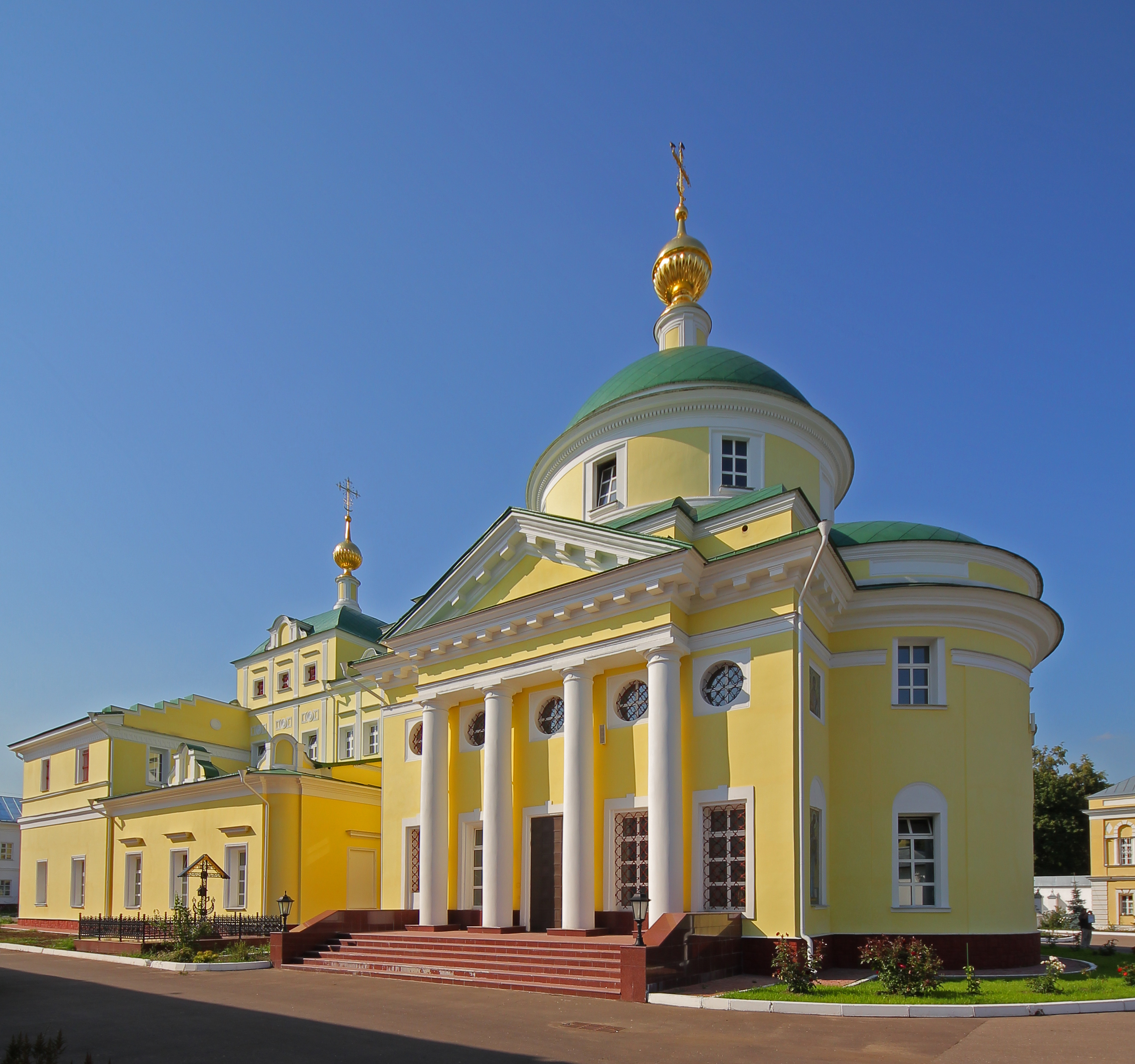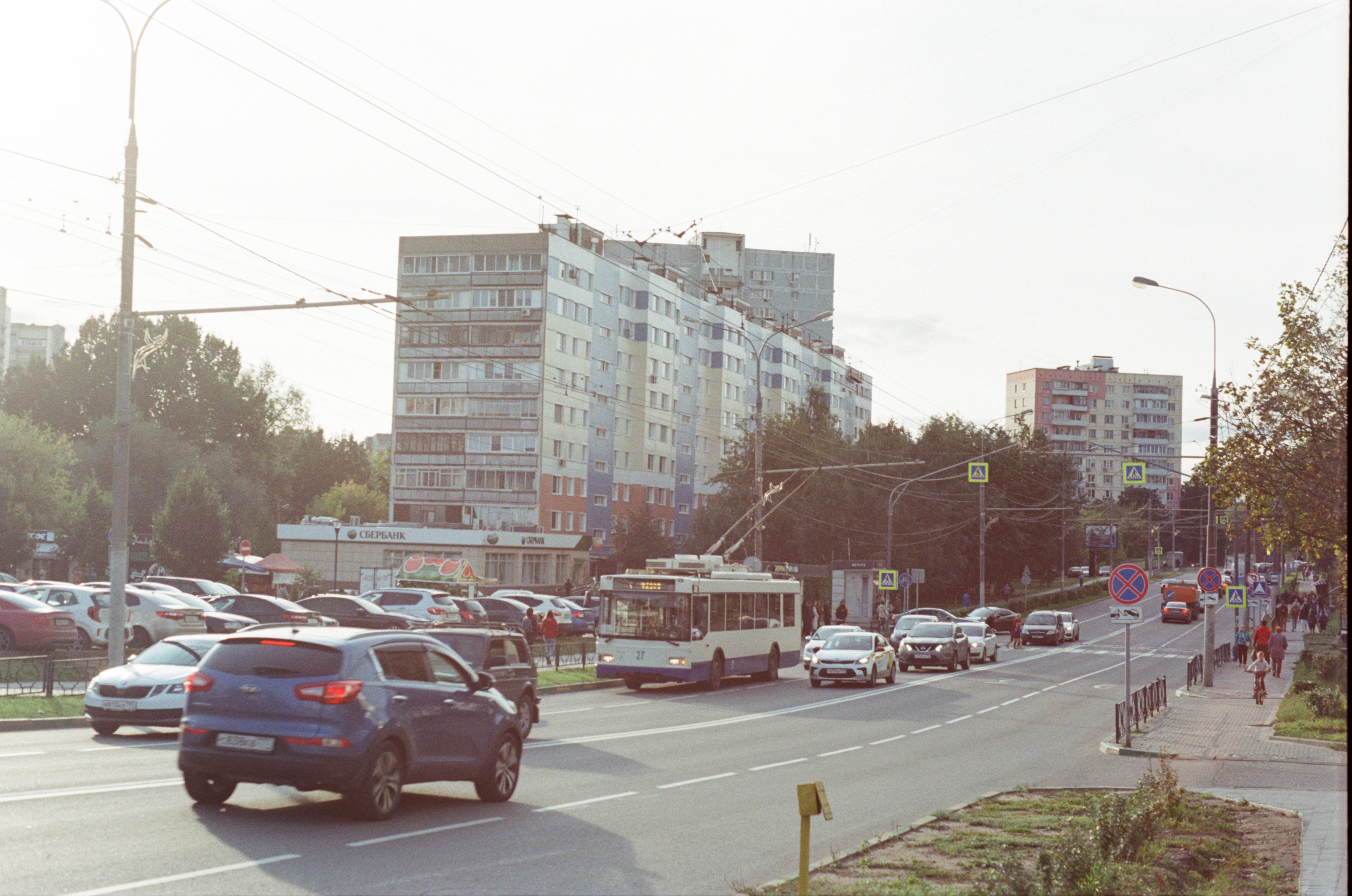|
Sukhanovo Prison
Sukhanovka, short for Sukhanovskaya osoborezhimnaya tyur'ma (russian: Сухановская особорежимная тюрьма) 'Sukhanovo special-regime prison,' was a prison established by the NKVD under N. I. Yezhov in 1938 for "particularly dangerous enemies of the people" on the grounds of the old Ekaterinskaia Pustyn' Monastery near Vidnoye, just south of Moscow. Known officially as Special Object 110 (russian: Спецобъект № 110), it was said to be worse than the Lubyanka, Lefortovo, or Butyrka prisons in Moscow itself. From 1958 it was a jail hospital. During 1992 the prison was returned to the church as a monastery and on November 17, 1992, the first vows were made within its walls. Conditions Aleksandr Solzhenitsyn called it "the most terrible prison the MGB had." He went on to write that interrogators used the mere threat of being sent there to intimidate prisoners, and there was no way to question those who had been there as they either had been d ... [...More Info...] [...Related Items...] OR: [Wikipedia] [Google] [Baidu] |
Vidnoe Monastery 01 - Cathedral
{{SIA, populated places in Russia ...
Vidny (russian: Ви́дный; masculine), Vidnaya (; feminine), or Vidnoye (; neuter) is the name of several inhabited localities in Russia. ;Urban localities *Vidnoye, Moscow Oblast, a town in Leninsky District of Moscow Oblast ;Rural localities * Vidny, Stavropol Krai, a settlement in Stavropolsky Selsoviet of Blagodarnensky District of Stavropol Krai * Vidny, Ulyanovsk Oblast, a settlement in Novoselkinsky Rural Okrug of Melekessky District of Ulyanovsk Oblast * Vidny, Voronezh Oblast, a settlement in Dobrinskoye Rural Settlement of Talovsky District of Voronezh Oblast * Vidnoye, Khabarovsk Krai, a '' selo'' in Vyazemsky District of Khabarovsk Krai Khabarovsk Krai ( rus, Хабаровский край, r=Khabarovsky kray, p=xɐˈbarəfskʲɪj kraj) is a federal subject (a krai) of Russia. It is geographically located in the Russian Far East and is a part of the Far Eastern Federal District ... [...More Info...] [...Related Items...] OR: [Wikipedia] [Google] [Baidu] |
NKVD
The People's Commissariat for Internal Affairs (russian: Наро́дный комиссариа́т вну́тренних дел, Naródnyy komissariát vnútrennikh del, ), abbreviated NKVD ( ), was the interior ministry of the Soviet Union. Established in 1917 as NKVD of the Russian Soviet Federative Socialist Republic, the agency was originally tasked with conducting regular police work and overseeing the country's prisons and labor camps. It was disbanded in 1930, with its functions being dispersed among other agencies, only to be reinstated as an all-union commissariat in 1934. The functions of the OGPU (the secret police organization) were transferred to the NKVD around the year 1930, giving it a monopoly over law enforcement activities that lasted until the end of World War II. During this period, the NKVD included both ordinary public order activities, and secret police activities. The NKVD is known for its role in political repression and for carrying out the Great ... [...More Info...] [...Related Items...] OR: [Wikipedia] [Google] [Baidu] |
Vidnoye, Moscow Oblast
Vidnoye ( rus, Ви́дное, p=ˈvʲidnəɪ) is a types of inhabited localities in Russia, city and the administrative center of Leninsky District, Moscow Oblast, Leninsky District in Moscow Oblast, Russia, located south of Moscow city limits. Population: History Rastorguyevo summer cottage community was established in this area in 1902. The construction of the ''Moscow Coke and Gas Works'' factory started in 1937 but was interrupted by World War II, and it was only in 1949 that the settlement of Vidnoye was established for the factory workers. Vidnoye was merged with Rastorguyevo and granted town status in 1965. Administrative and municipal status Within the subdivisions of Russia#Administrative divisions, framework of administrative divisions, Vidnoye serves as the administrative center of Leninsky District, Moscow Oblast, Leninsky District.Resolution #123-PG As an administrative division, it is, together with seven types of inhabited localities in Russia, rural local ... [...More Info...] [...Related Items...] OR: [Wikipedia] [Google] [Baidu] |
Moscow
Moscow ( , US chiefly ; rus, links=no, Москва, r=Moskva, p=mɐskˈva, a=Москва.ogg) is the capital and largest city of Russia. The city stands on the Moskva River in Central Russia, with a population estimated at 13.0 million residents within the city limits, over 17 million residents in the urban area, and over 21.5 million residents in the metropolitan area. The city covers an area of , while the urban area covers , and the metropolitan area covers over . Moscow is among the world's largest cities; being the most populous city entirely in Europe, the largest urban and metropolitan area in Europe, and the largest city by land area on the European continent. First documented in 1147, Moscow grew to become a prosperous and powerful city that served as the capital of the Grand Duchy that bears its name. When the Grand Duchy of Moscow evolved into the Tsardom of Russia, Moscow remained the political and economic center for most of the Tsardom's history. When th ... [...More Info...] [...Related Items...] OR: [Wikipedia] [Google] [Baidu] |
Lubyanka (KGB)
The Lubyanka ( rus, Лубянка, p=lʊˈbʲankə) is the popular name for the building which contains the headquarters of the FSB, and its affiliated prison, on Lubyanka Square in the Meshchansky District of Moscow, Russia. It is a large Neo-Baroque building with a facade of yellow brick designed by Alexander V. Ivanov in 1897 and augmented by Aleksey Shchusev from 1940 to 1947. It was previously the national headquarters of the KGB. Soviet hammer and sickles can be seen on the building's facade. Description The Lubyanka building is home to the Lubyanka prison, the headquarters of the Border Guard Service, a KGB museum, and a subsection of the FSB. Part of the prison was turned into a prison museum, but a special authorization is required for visits. The lower floors are made of granite with emblazoned Soviet crests. History Origins The Lubyanka was originally built in 1898 as the headquarters of the All-Russia Insurance Company (''Rossiya Insurance Company''), ... [...More Info...] [...Related Items...] OR: [Wikipedia] [Google] [Baidu] |
Butyrka
Butyrskaya prison ( rus, Бутырская тюрьма, r= Butýrskaya tyurmá), usually known simply as Butyrka ( rus, Бутырка, p=bʊˈtɨrkə), is a prison in the Tverskoy District of central Moscow, Russia. In Imperial Russia it served as the central transit prison. During the Soviet Union era (1917-1991) it held many political prisoners. Butyrka remains the largest of Moscow's remand prisons. Overcrowding is an ongoing problem. History The first references to Butyrka prison may be traced back to the 17th century. The current building was erected in 1879 near the Butyrsk gate (, or Butyrskaya zastava) on the site of a prison- fortress which had been built by the architect Matvei Kazakov during the reign of Catherine the Great. The towers of the old fortress once housed the rebellious Streltsy during the reign of Peter I, and later on hundreds of participants of the 1863 January Uprising in Poland. Members of Narodnaya Volya were also prisoners of the Buty ... [...More Info...] [...Related Items...] OR: [Wikipedia] [Google] [Baidu] |
Aleksandr Solzhenitsyn
Aleksandr Isayevich Solzhenitsyn. (11 December 1918 – 3 August 2008) was a Russian novelist. One of the most famous Soviet dissidents, Solzhenitsyn was an outspoken critic of communism and helped to raise global awareness of political repression in the Soviet Union, in particular the Gulag system. Solzhenitsyn was born into a family that defied the Soviet anti-religious campaign in the 1920s and remained devout members of the Russian Orthodox Church. While still young, Solzhenitsyn lost his faith in Christianity, became an atheist, and embraced Marxism–Leninism. While serving as a captain in the Red Army during World War II, Solzhenitsyn was arrested by the SMERSH and sentenced to eight years in the Gulag and then internal exile for criticizing Soviet leader Joseph Stalin in a private letter. As a result of his experience in prison and the camps, he gradually became a philosophically-minded Eastern Orthodox Christian. As a result of the Khrushchev Thaw, Solzhenitsyn was r ... [...More Info...] [...Related Items...] OR: [Wikipedia] [Google] [Baidu] |
Ministry For State Security (USSR)
The MGB (russian: МГБ), an initialism for ''Ministerstvo gosudarstvennoy bezopasnosti SSSR'' ( rus, Министе́рство госуда́рственной безопа́сности СССР, p=mʲɪnʲɪˈsʲtʲerstvə ɡəsʊˈdarstvʲɪn(ː)əj bʲɪzɐˈpasnəsʲtʲɪ ; translated in English as Ministry for State Security), was the name of the Soviet state security apparatus dealing with internal and external security issues: secret police duties, foreign and domestic intelligence and counterintelligence, etc. from 1946 to 1953. Origins of the MGB The MGB was just one of many incarnations of the Soviet State Security apparatus. After the revolution, the Bolsheviks relied on a strong political police or security force to support and control their regime. During the Russian Civil War, the Cheka were in power, relinquishing it to State Political Directorate (GPU) in 1922 after the fighting was over. The GPU was then renamed The People's Commissariat for Internal Aff ... [...More Info...] [...Related Items...] OR: [Wikipedia] [Google] [Baidu] |
Gulag Archipelago
''The Gulag Archipelago: An Experiment in Literary Investigation'' (russian: Архипелаг ГУЛАГ, ''Arkhipelag GULAG'') is a three-volume non-fiction text written between 1958 and 1968 by Russian writer and Soviet dissident Aleksandr Solzhenitsyn. It was first published in 1973, and translated into English and French the following year. It covers life in what is often known as the Gulag, the Soviet forced labour camp system, through a narrative constructed from various sources including reports, interviews, statements, diaries, legal documents, and Solzhenitsyn's own experience as a Gulag prisoner. Following its publication, the book initially circulated in ''samizdat'' underground publication in the Soviet Union until its appearance in the literary journal ''Novy Mir'' in 1989, in which a third of the work was published in three issues. Since the dissolution of the Soviet Union, ''The Gulag Archipelago'' has been officially published in Russia. Structure As structur ... [...More Info...] [...Related Items...] OR: [Wikipedia] [Google] [Baidu] |
Deprived Of Sleep
Sleep deprivation, also known as sleep insufficiency or sleeplessness, is the condition of not having adequate duration and/or quality of sleep to support decent alertness, performance, and health. It can be either chronic or acute and may vary widely in severity. Acute sleep deprivation is when an individual sleeps less than usual or does not sleep at all for a short period of time – usually lasting one to two days. Chronic sleep deprivation means when an individual routinely sleeps less than an optimal amount for ideal functioning. Chronic sleep deficiency is often confused with the term insomnia. Although both chronic sleep deficiency and insomnia share decreased quantity and/or quality of sleep as well as impaired function, their difference lies in the ability to fall asleep. Sleep deprived individuals are able to fall asleep rapidly when allowed but those with insomnia have difficulty falling asleep. The average adult needs seven or more hours of sleep per night to mainta ... [...More Info...] [...Related Items...] OR: [Wikipedia] [Google] [Baidu] |
Filipp Goloshchyokin
Filipp Isayevich Goloshchyokin (russian: Филипп Исаевич Голощёкин) (born Shaya Itsikovich) (russian: Шая Ицикович) ( – October 28, 1941) was a Bolshevik revolutionary, Soviet politician, and party functionary, principally remembered for his collectivization in the Kazakh Autonomous Socialist Soviet Republic which subsequently caused the Kazakh famine of 1932–1933, in which 1.5 million people died, of whom 1.3 million were ethnic Kazakhs. An estimated 38 to 42 percent of all Kazakhs died, the highest percentage of any ethnic group killed by the Soviet famine of 1932–1933. Other sources state that as many as 2.0 to 2.3 million died. A member of the Russian Social Democratic Labour Party since 1903 and a founding member of the Russian Communist Party (Bolsheviks), he was a participant in the Revolution of 1905 and the October Revolution. During the Russian Civil War he was a major figure in the establishment of Soviet power in the Urals and ... [...More Info...] [...Related Items...] OR: [Wikipedia] [Google] [Baidu] |






